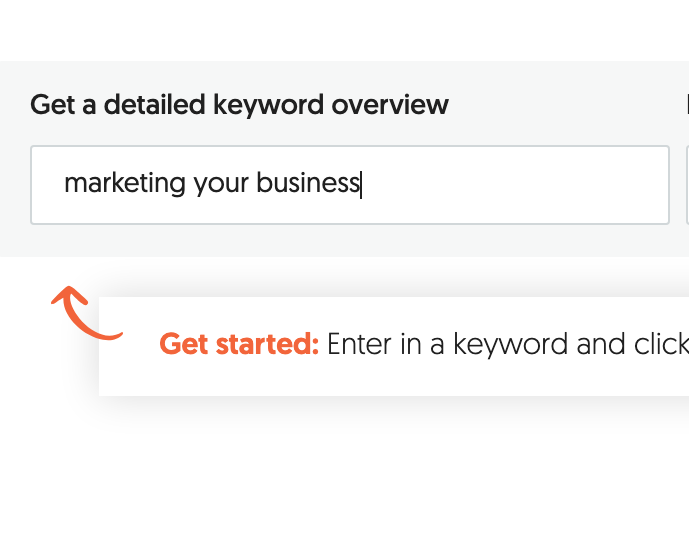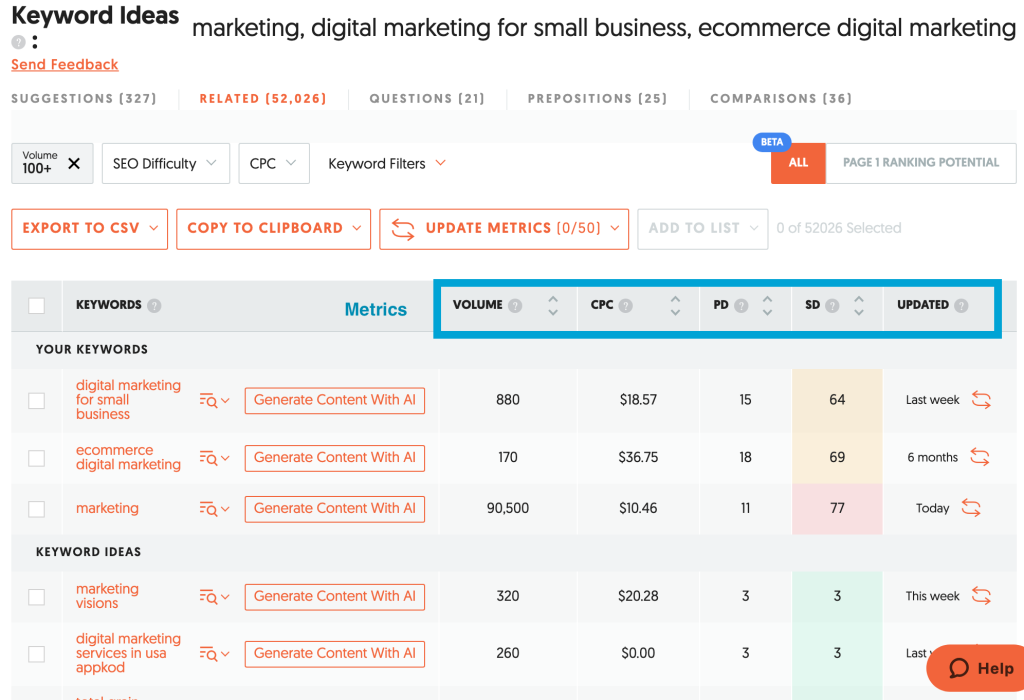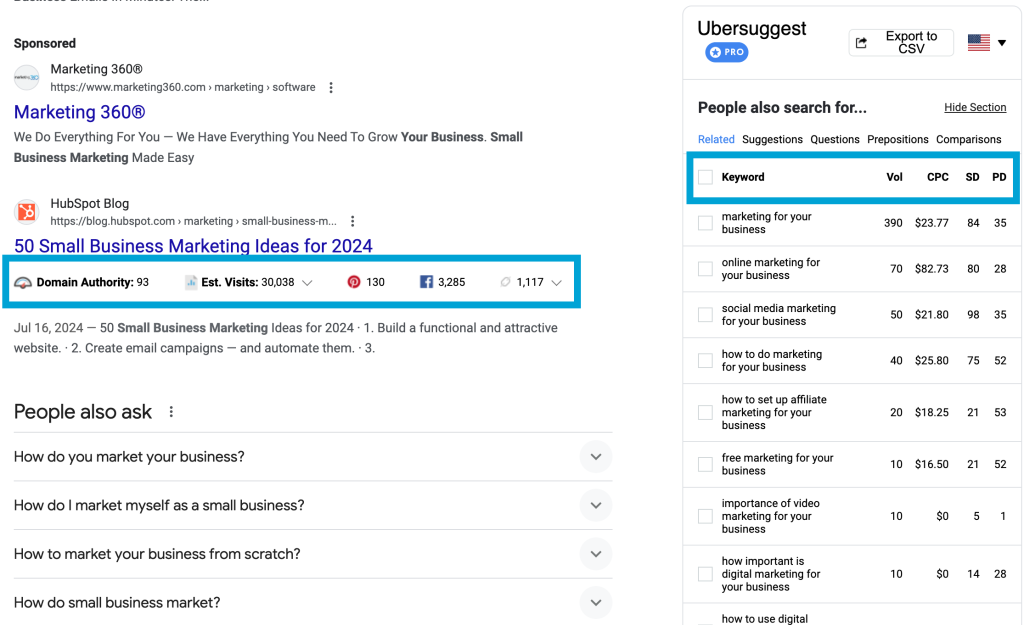What Are SEO Keywords? Attract Your Audience with the Right SEO Keywords
July 26, 2024
What Are SEO Keywords? Learn How to Attract Your Target Audience with the Right SEO Keywords.
Reaching your target audience can feel like a chore sometimes. With so many content avenues to keep up with – it’s easy to discount the fact that it’s possible for them to find you instead of you trying to find them.
At Maggie Writes Copy, I’m all about maximizing your audience reach – without spinning your wheels with tactics that don’t further your business journey.
So today, we’re talking all about SEO keywords. What they are, how to target the keywords your audience is searching for, and where to place keywords on your site.
Let’s start at the beginning…
Understanding SEO Keywords… and How They Expand Your Online Presence.
As a business owner, you’ve likely heard of Search Engine Optimization (SEO). It’s the process that determines whether Search Engines rank your site in their results pages.
But it’s easy to fall into the trap of believing SEO is impossible to learn or apply to your own site. Which simply isn’t the case.
You absolutely have the ability to optimize your own site. The cornerstone of this process – SEO keyword research and placement.
What are SEO keywords and why do they matter?
SEO keywords are special search terms that people put into a search engine to find:
- Products
- Services
- Solutions to problems
- Answers to questions
The difference between a search term and an SEO keyword – a random search term you come up with may or may not actually pull up results.1
An SEO keyword, on the on the other hand, has many people searching for it per month. As a result, the search engines have ranked content that corresponds with it.
You may be wondering how this works…
How SEO keywords affect search engine rankings.
To rank a site, Google “crawls” it. This means their bots scan your website looking for specific SEO keywords that tell it what the site is about.
Without those keywords, Google has no way of knowing what your site is about or who should see it.
One of the biggest mistakes I see business owners make with their site is not having enough words on the page. While you may believe your product speaks for itself, Google disagrees.
If they can’t categorize your site, they aren’t going to show it to anyone.
Having the right SEO keywords in the right places on your site is very important for making sure your site actually ranks and is organically visible to your audience.
Let’s talk about what I mean when I say the right keywords.
SEO keywords that speak to your target audience.
While you may think having a lot of keywords that get a high volume of searches every month is enough, there are a lot of other things to consider.
The most important – what it is your audience needs.
Finding keywords that fit your audience’s searches can make or break your SEO. This is because Google tracks whether people who click on your site actually stay there to read what you have to say.

Having a high bounce rate (people leaving within seconds of arriving) tells Google that even though you have a lot of keywords sprinkled around, you’re not meeting the search intent behind the keyword.
For example, an online bookkeeping company isn’t going to want to target keywords about laundry detergent.
This is an extreme example of SEO keywords gone wrong. But illustrates the point.
Once you determine what searches your audience may be performing, it’s time to check keyword metrics to see if they’re worth targeting.
How to determine the value of an SEO keyword for your site.
There are a few different metrics to check whether a keyword is ripe for targeting.
- Search Volume (V): This tells you the number of searches performed with this search term per month. A high V means lots of people are searching for it. A low V means very few are. SEO keywords can range from a V of 0-100,000+.
- Search Difficulty (SD): This metric tells you how hard a term will be to rank for. SEO keywords are generally ranked from 0-100. The higher the SD the more competitive a keyword is to rank for.
- Cost Per Click (CPC): This number doesn’t affect your ability to rank for a keyword organically. But it’s a good idea to see if people are paying for a keyword. Typically, if someone is paying for ads on a keyword it means it’s a lucrative keyword to target.
- Paid Difficulty (PD): This goes along with the CPC. It’s not necessarily important for building organic traffic, but it will tell you whether it’s worth targeting or not.
Picking your keywords is a balancing act. You want to have a decent volume of traffic to the keyword without the search difficulty being too high. Especially if you are just starting your SEO journey.
There are a few different types of keywords that can help with this.
Types of SEO Keywords to Include on Your Website
We’re going to talk about the three different types of keywords and how they can help you create targeted content that lands with your audience.
1. Main SEO keywords – shorttail keywords aka seed keywords
These keywords are typically 1-2 words long. They often cover a broad topic.2
This leads to them having extremely high search volume but it can also mean they have an extremely high search difficulty.
Shorttail keywords are often helpful for narrowing down your topic and what other keywords you’re going to use.
How?
Choose one shorttail keyword that you want to target. Then make sure 80% of your other keywords include it.
You can do this because your other keywords are going to be longer.
Example of shorttail SEO Keywords

2. Medium tail SEO keywords
Medium tail keywords are typically 2-3 words long. They’re going to be a bit more targeted than your main (shorttail) keyword.
As a result, they’re going to be:
- More focused than your main keyword
- Have a smaller search volume
- Have a lower search difficulty
- Speak more directly to your target audience
Medium tail SEO keywords help you continue to target a larger volume of searches while getting closer to your actual topic.
Now it’s time to take it one step further.
Example of medium tail SEO keywords

3. Longtail SEO keywords
These inform the main topic of your article or site. They’re hyper-focused and should speak directly to your audience’s needs. Typically they’re 3-5 words long.
Longtail keywords generally have the lowest search volume and the lowest search difficulty. If you’re wondering why you should target a keyword with a small search volume, you’re not alone.
But Longtail keywords should be chosen to speak directly to your audience. They help you meet their search intent clearly and directly.
Typically the people who click on your site based on longtail keywords are the closest you’re going to get to a warm audience from Google.
Longtail SEO keyword example

With so many types of keywords to choose from, you may be wondering how to choose them.
How many keywords are good for SEO?
While one page or post can rank for 100’s or even 1000’s of keywords, you don’t have to target that many when you write your website.
To create a hyper-targeted post that meets search intent you should choose just a few keywords:
- 1 Main (shorttail) keyword
- 3-5 secondary medium and longtail keywords
Make sure some of your secondary keywords include your main keyword inside of them. However, you don’t want to include it in all of them.
If your main keyword shows up too many times, Google may think you’re keyword stuffing. This is an indicator your article may be less helpful to your audience and Google will penalize your site.
Targeting 4-6 keywords total will get the ball rolling, but if your article is informative and helpful to your audience, it has the potential to rank for thousands of keywords and bring lots of traffic to your website.
Where are you going to find these keywords?
SEO Keyword Research and Analysis
We’ve talked about user intent, search volume, and search difficulty. Now we need to discuss what tools to use to find these keywords.
Competitive keyword research tools.
There are many different tools out there for keyword research. First, let’s discuss a couple of my favorite tools.
- Ahrefs:3 On the higher end of pricing but also one of the most accurate.
- Ubersuggest:4 On the lower end of pricing, may be slightly less accurate but will still give you plenty of information to create your content. They also give you three free searches a day.
- Google Trends:5 Not a traditional keyword tool. However, this free tool gives a lot of real time information about what people are searching for and when. The information comes directly from Google and is highly useful.
Both Ahrefs and Ubersuggest will give you the search volume and search difficulty of a keyword. As well as giving you ideas for medium and longtail keywords to go with your main keyword.
Let’s go over some examples using Ubersuggest.
Example of SEO keyword research

You can use tools for your own keyword research. You can also use them to analyze other sites.
Keyword research and competitor analysis.
Analyzing your competitor’s keyword research helps give you an idea of what content Google finds valuable on a topic. There are a couple ways you can do that.
- Take a look at the headings of all their pages and posts. Headings are one of the main places keywords live.
- Run them through Ubersuggest or Ahrefs to see what they’re ranking for and then look at the content that’s ranking.
- Download the Ubersuggest Chrome extension6 and type in search terms.
The third option is one of my favorites. Not only does it show you who’s ranking in real life, it gives you all the relevant keyword metrics and other suggested search terms.
Then all you have to do is click the page link to check out the on-page content… Did I mention it’s free??
Something I think is important to touch on. When you do competitor research and then write – make sure you aren’t copying other people’s content.
Not only is this unethical, but it also hurts your SEO rather than helping.
Sometimes copying can happen unintentionally. So it’s a good idea to run your content through a plagiarism checker7 to be on the safe side. There is so much content out there it’s almost necessary now.
A good rule of thumb is you shouldn’t get a higher score than 10%. That 10% shouldn’t be word for word copying of anything other than direct quotes or incidental matches like common phrases:
- Break a leg
- Better late than never
- Piece of cake
Now that you’ve researched your keywords, where should they go?
Example of Ubersuggest Chrome results

How to Add SEO Keywords to Your Website
There are typically two different categories of SEO keyword placement:
- On-Page SEO
- Off-Page SEO
Format your website with on-page SEO.
There are several easy places to plug in your SEO keywords. Make sure when you do this the keywords actually make sense in the context of your article.
You should be writing to your human readers first and foremost. If your readers bounce it will automatically inform Google not to rank your site high.
Here are some easy places to put your SEO keywords:
- Titles
- Main Heading (H1)
- Subheadings (H2, H3, H4)
- Sprinkled throughout the content/copy
- Within the first 100 words of the page/post
- Decorated text (bold, italic, underlined, linked text)
You can see how you may be able to determine what keywords competitors may be targeting for pages. These are all very visible locations.
Let’s talk about some less visible locations.
Format your website with off-page SEO.
While on-page SEO is visible, off-page SEO keyword placement isn’t. Instead, it’s coded into the backend of your site for Google to read.
But this doesn’t mean it’s hard to set up.
Here are examples of backend SEO keyword placement:
- Your URLs
- Image alt text
- Image file names
- Meta Descriptions
When your keywords mirror your content, it’s fairly easy to plug them into the backend of your site.
All of this leads to one question…
Are Keywords Still Important for SEO?
The answer is a huge resounding yes! Keywords tell Google AND your reader what your content and site are about.
These simple and effective methods ensure Google recognizes the value of your site, pages, and posts – then shares them with your audience.
Ready to jumpstart your SEO strategy today? Grab my ebook SEO for Beginners for step by step keyword research and SEO implementation on your site.
Want more SEO and email marketing tips to come across your screen? Sign up for my email list and never miss a useful nugget of information!
Resources:
1 What are SEO Keywords – Leanne Wong
2 Short tail SEO keywords – Ahrefs
3 Keyword Research – Ahrefs
4 Keyword Research – Ubersuggest
5 Search Terms – Google Trends
6 Competitor Analysis – Chrome extension for Ubersuggest
7 Plagiarism Checker – Small SEO Tools
Maggie Schlegel

Leave a Reply Cancel reply
P.S. This opts you into my newsletter. But I promise no spam! Unsubscribe any time.